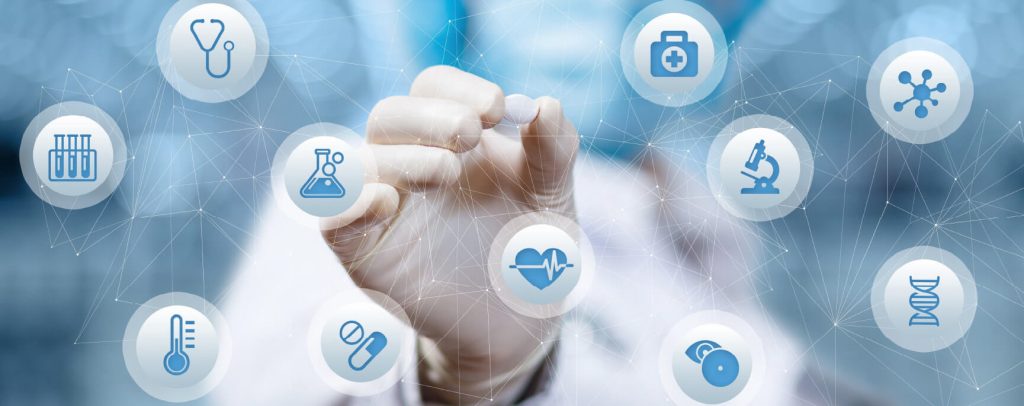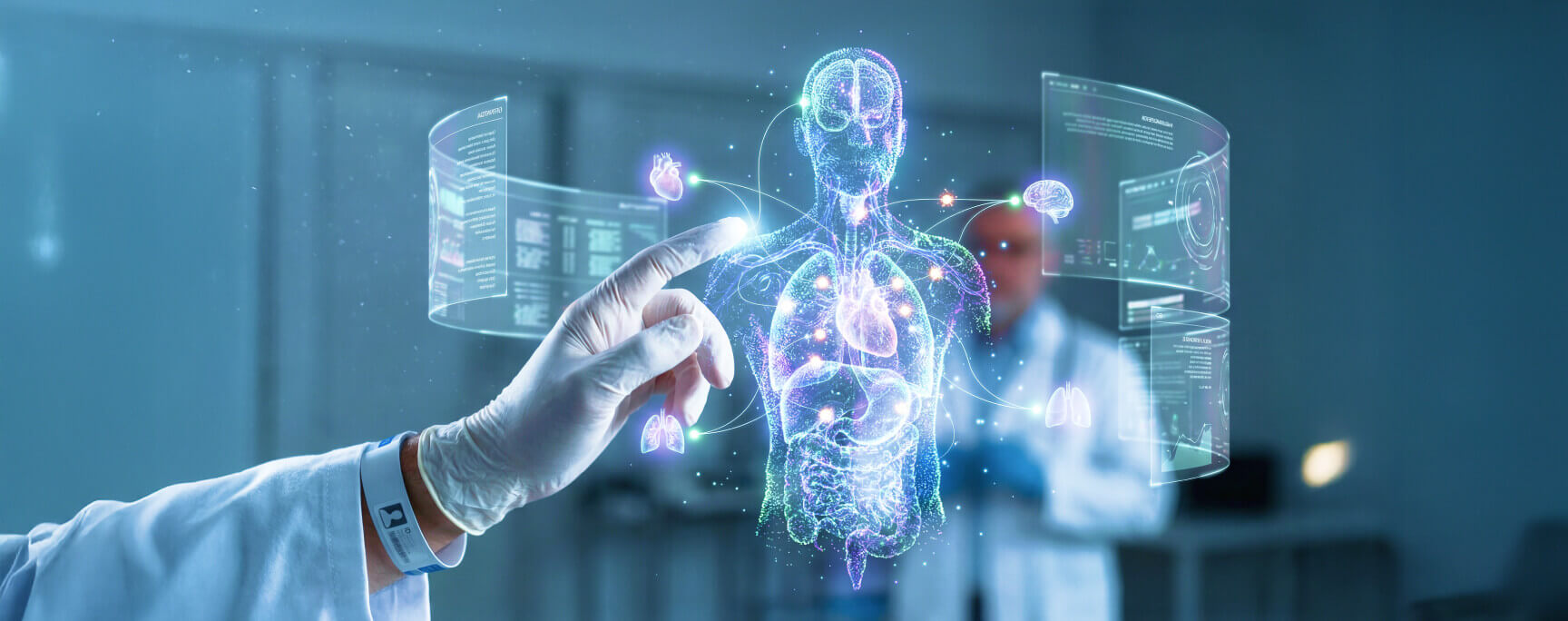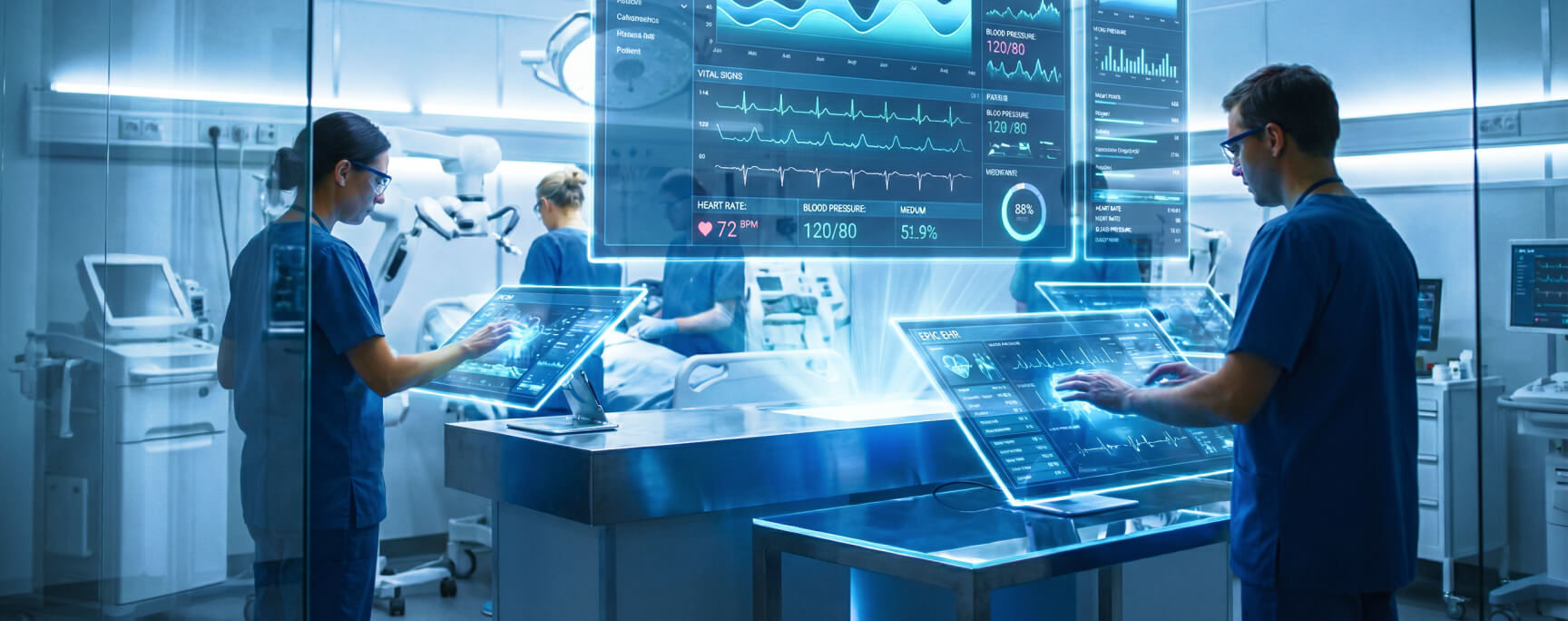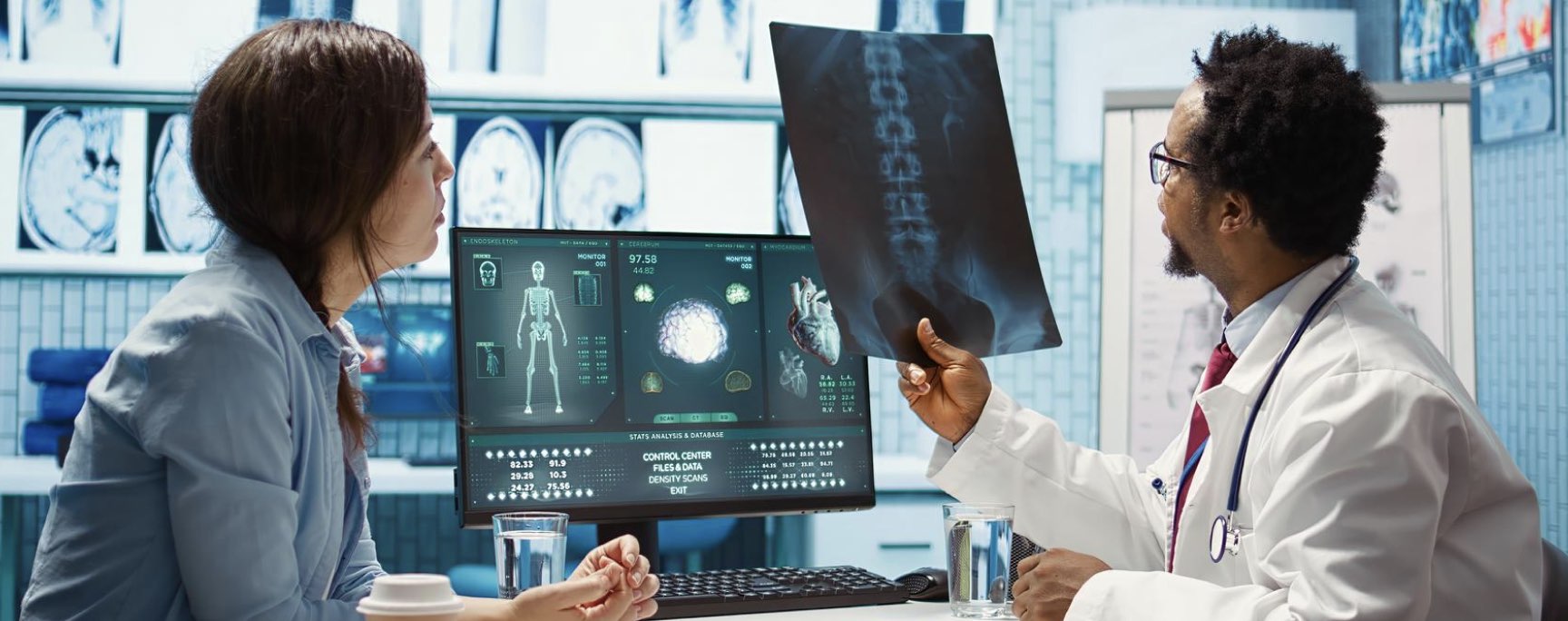How Lab Data Integration and AI Are Transforming Clinical Lab Efficiency
Clinical laboratories are the unsung heroes of healthcare, producing the data and analysis that influence major medical decisions; and lab data integration is key to unlocking their full potential. Across the industry, clinical laboratories perform thousands of tests per day, from blood work to genetic screenings and more. Every one of those tests produces data, large quantities of it. However, managing this data while ensuring accuracy and also sharing it with other healthcare systems can be a tad daunting. Manual processes, data silos, & inefficient workflows can lead to delays, errors, and disconnected systems.
Artificial intelligence (AI) and data interoperability are two solutions to this problem. AI relies on high-level computing to sift through data, automatically execute tasks, and increase accuracy, and data interoperability can share information between systems seamlessly. Working together, clinical lab workflow automation turns labs into more efficient, precise, and networked affairs.
In this blog, we’re breaking down what this means and how these technologies are transforming labs, from lab data integration to clinical lab workflow automation, and what this means for the future of healthcare.
Understanding Data Interoperability in Clinical Labs
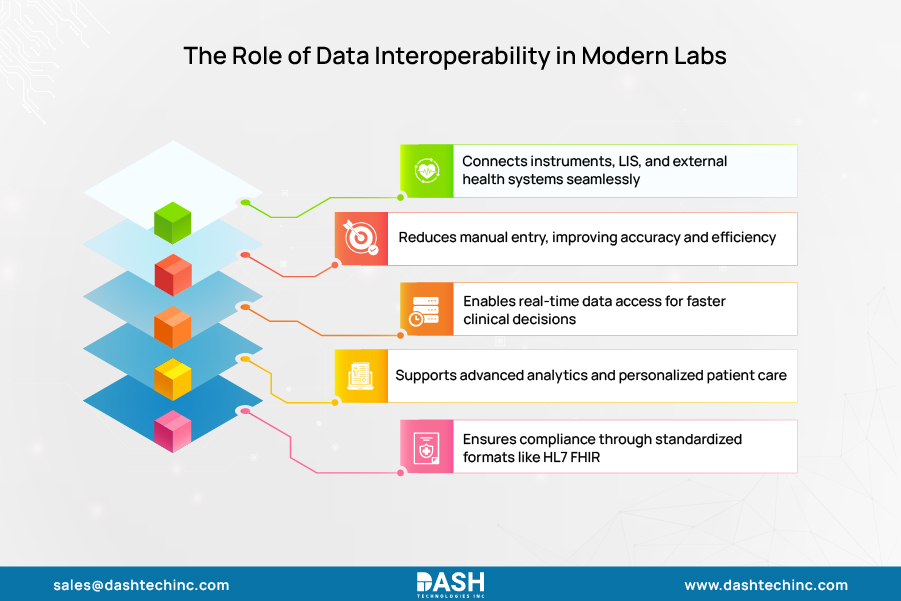
Data interoperability refers to the ability of different information technology systems and software applications to communicate, exchange data, and utilize the exchanged info effectively. Interoperability in clinical laboratories enables the automated exchange of data between instruments, laboratory information systems (LIS), and external healthcare systems, thereby preventing manual intervention and minimizing the potential for errors.
The benefits of successful lab data integration extend far beyond operational effectiveness. With laboratory data integrated continuously and readily available, it enables real-time decision support, predictive analytics, and improved population health management, transforming patient care. Healthcare organizations that implement end-to-end data integration methods experience significant increases in diagnostic turnaround time, accuracy, and overall workflow efficiency.
However, true interoperability goes beyond just connecting systems together. It requires standardized data formats, strong security measures, and careful attention to regulatory compliance throughout the data exchange process. HL7 FHIR is helping to address this issue by providing a standard data format for the exchange of healthcare information.
Lab Integration That Works
Enhance operational efficiency, reduce manual errors, and drive better outcomes with lab data integration solutions built for modern healthcare.
Talk to an Expert
AI’s Role in Clinical Lab Transformation
AI is transforming laboratory operations by automating processes such as sample preparation, analysis, result interpretation, and quality control. Through healthcare AI integration in clinical laboratories, machine learning algorithms are being used for pattern recognition in diagnostic data, while automated image analysis supports fields like pathology and hematology.
Additionally, predictive analytics is streamlining clinical lab workflows by enabling faster and more accurate decision-making—all of which contribute to improved diagnostic accuracy and turnaround time. AI-powered systems can quickly sort through vast amounts of lab data and find patterns and outliers that traditional analysis methods might miss. For example, AI algorithms are now being utilized for automated blood panel analysis, digital pathology review, and the early detection of life-threatening conditions, such as sepsis.
One of the strongest points of AI healthcare integration is that it supports human capabilities instead of substituting for them. Laboratory personnel collaborate with AI systems, verifying results, adding clinical context, and ensuring quality control measures are in place. This collaboration between human expertise and AI-powered tools can improve diagnostic accuracy while freeing up laboratory staff to focus on other tasks that require human insight and experience.
How Lab Data Integration is Revolutionizing Workflows
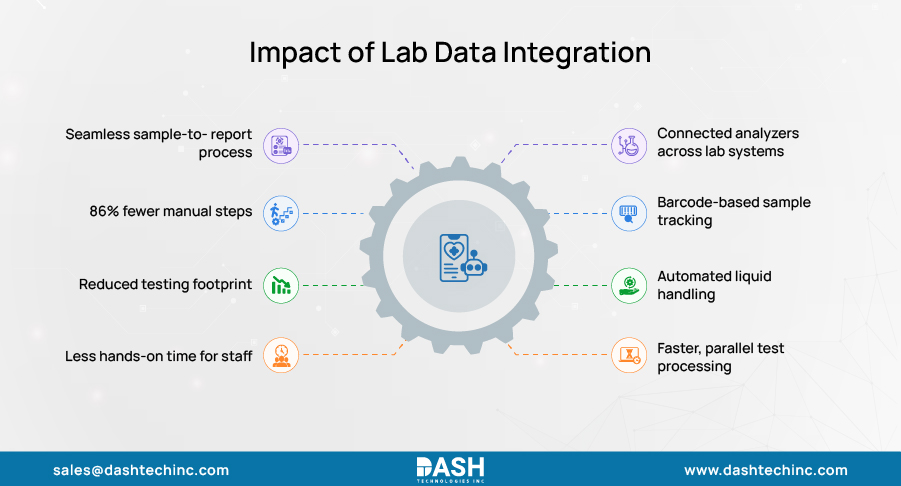
Today’s clinical lab workflow automation solutions begin with data integration, which ties all elements of the testing process together. From collecting and processing samples to analyzing and reporting data, an integrated system of automation helps create streamlined workflows that reduce manual handling and errors.
By automating workflows with total laboratory automation (TLA) systems, labs can see up to 86% fewer discrete processing steps, a 45% smaller testing footprint, and significantly less hands-on time for lab personnel. Connecting preanalytical processing systems to hematology, coagulation, and chemistry analyzers, as well as immunofluorescence microscopy and immunoassay platforms, labs will create even more efficient and streamlined workflows.
Barcode scanning and reading help identify and track samples throughout the lab workflow, and barcoding can reduce the risk of sample mix-ups. Liquid handling systems can dispense samples and fluids, dilute specimens, and then deliver them to testing platforms. Automated chemistry analyzers and immunoassay platforms can test multiple specimens at once and produce concurrent results.
The Role of HL7 FHIR in Laboratory Data Exchange
As we have already discussed above, for data interoperability to work, everyone needs to speak the same language, and HL7 FHIR (Fast Healthcare Interoperability Resources) has emerged as the leading standard for healthcare data exchange. It provides a modern, web-based approach to interoperability that is particularly well-suited for laboratory applications. FHIR’s RESTful architecture and JSON-based data format make it more accessible and easier to implement than traditional HL7 standards.
The successful deployment of HL7 FHIR for laboratory data exchange in a production environment has highlighted the practical advantages of the standard, with one implementation modelling 1,226 observation profiles and 2,396 commercial test profiles in a production system that is currently receiving more than 20,000 test orders and over 40,000 tests per day, demonstrating FHIR’s ability to support enterprise-scale laboratory data exchange.
Laboratories can create custom profiles and extensions in FHIR without losing interoperability with standard healthcare systems. This means laboratories can use the standard to both meet their need for supporting standardization while still being flexible enough to create custom extensions for more specialized testing requirements. The standard support for both structured and unstructured data makes it particularly valuable for laboratory applications that involve complex result reporting.
Getting Started: A Strategic Approach to AI and Data Interoperability Implementation
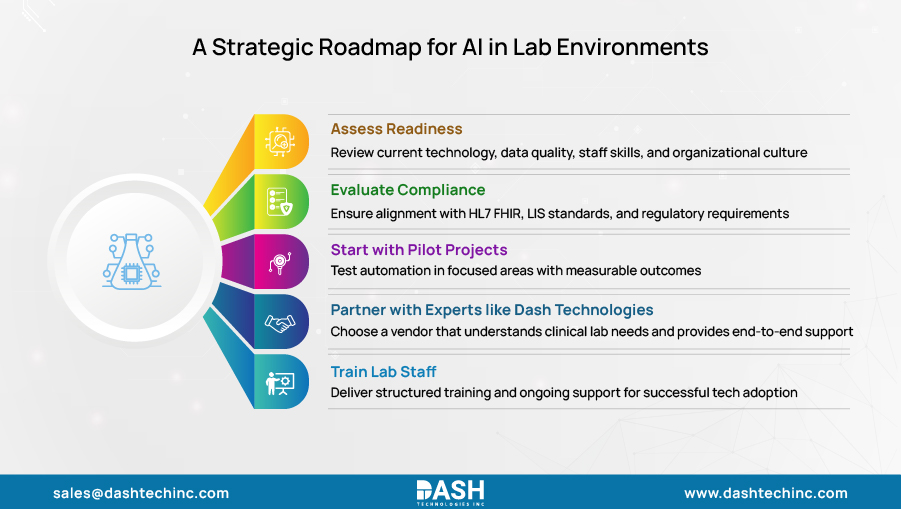
Organizations implementing AI and data interoperability solutions in clinical laboratories should adopt a strategic, phased approach balancing ambition with practical considerations. Successful transformation requires careful planning, stakeholder engagement, and a clear understanding of organizational readiness.
Assessment and Planning
The first step is to perform an exhaustive assessment of current capabilities, including technology infrastructure, data quality, employee skills, and the existing organizational culture. This assessment shows where the adoption of AI in healthcare and laboratory data can yield the greatest impact, and in doing so uncovers potential challenges.
Organizations must evaluate regulatory environments and guidelines to ensure compliance with applicable standards, thereby ensuring the implementation of HL7 FHIR and lab information systems (LIS) adhere to relevant standards.
Implementation Strategy
Pilot projects offer the best opportunities to demonstrate the benefits of new technology with lower risk. Organizations need to look for specific applications where clinical laboratory workflow automation addresses operational issues, including quantifiable measures of success and total evaluation models.
Partnership with the Right Vendor
Partnering with experienced vendors like Dash Technologies is not just an option but a strategic necessity. Partners must understand the clinical laboratory’s needs and provide comprehensive support throughout the health product lifecycle.
Train your Employees
Staff development is often considered Achilles’ heel for success and is most often neglected in technology projects. A comprehensive approach to training, communication, and ongoing support is essential to help laboratory professionals effectively adopt and adapt to new technologies and workflows.
Final Thoughts
AI and data interoperability are changing the game for clinical labs. From lab data integration to HL7 FHIR, LIS, AI healthcare integration, and clinical lab workflow automation, labs are getting faster, more accurate, and more integrated with healthcare; resulting in better diagnoses, streamlined operations, and improved patient outcomes.
Embracing AI and data interoperability changes will set your clinical lab apart in the future of healthcare as it shifts to be more intelligent and more patient centered. Want to future-proof your clinical laboratory with AI and data interoperability? Reach out to Dash Technologies today!
About Dash

Dash Technologies Inc.
We’re technology experts with a passion for bringing concepts to life. By leveraging a unique, consultative process and an agile development approach, we translate business challenges into technology solutions Get in touch.
